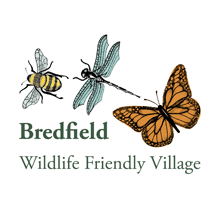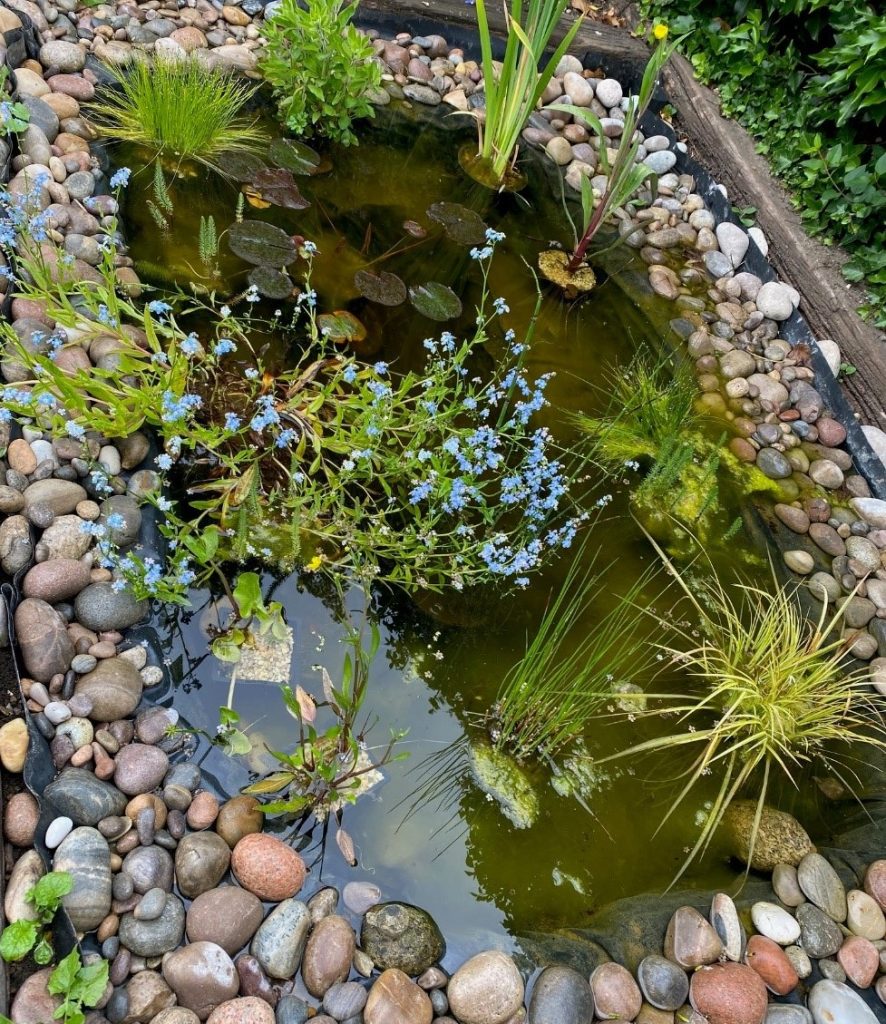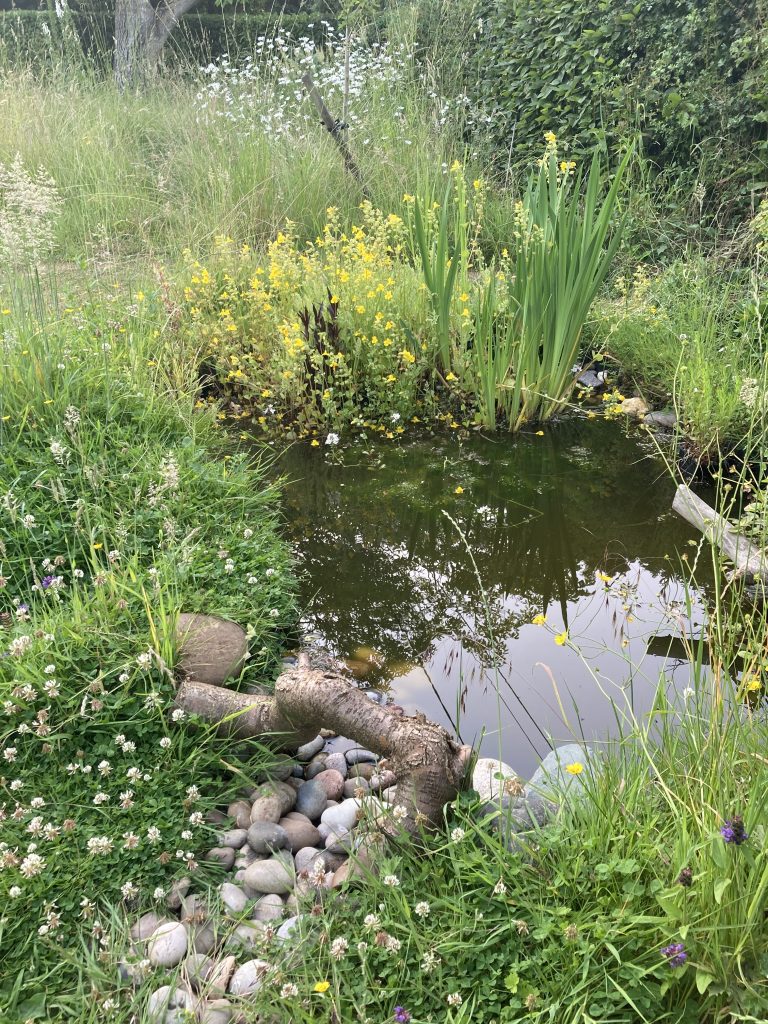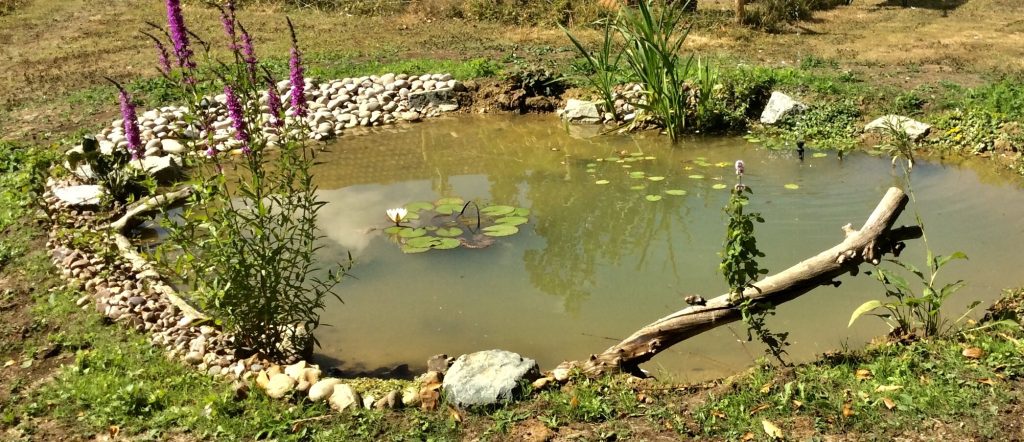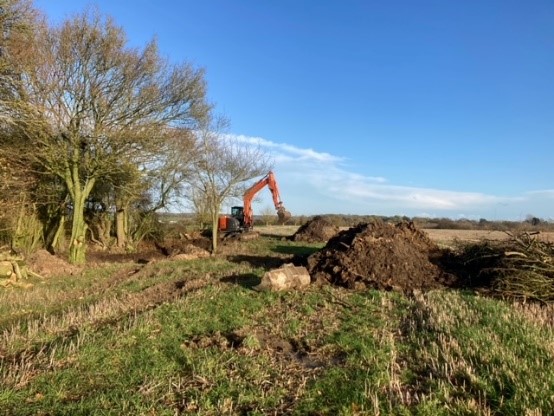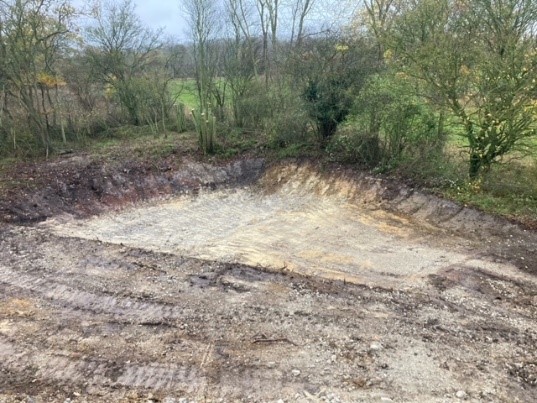How were our ponds created?
There are a good number of ponds to be found around Bredfield. How did they get there? Though ponds can result from geological or other ‘natural’ processes, it is most likely that the ponds around Bredfield are the result of human intervention: ‘man-made’. This feature article examines Bredfield’s ponds from both a social history and an environmental perspective.
Historically, ponds would have been created to assist agricultural practices of the day. Ponds would have been dug for irrigation purposes, providing water for livestock, and even to fill stream-driven farm machinery. In addition, an important reason for the creation of local ponds would have been the practice of ‘marling’. Marling is the process of mixing clay with sandy soil in order to enrich it and, thereby, enhance yield. Clay would have been dug from areas of clay soil, like Bredfield, and transported to areas of sandy soil, such as the heathland of coastal Suffolk. George Ewart Evans describes this practice, as it happened around Blaxhall, in his wonderful social history book ‘Ask The Fellows Who Cut The Hay’. Local clay might also have been used for pottery, and that is yet another reason for excavation. After the digging was completed, a pond would eventually collect in the depression (sometimes called a ‘clay-pit pond’). In some circumstances, the pond may have been used for other farm purposes, but in many cases they would simply have been neglected. When left, and when it was impossible to plough right up to the edge of the depression, shrubs and trees would grow around the pond. It wouldn’t have taken long in these circumstances for a small, local ecosystem to emerge: frogs, newts and dragonfly larva in the water; Nightingales and Whitethroat in the surrounding shrub; and much more.
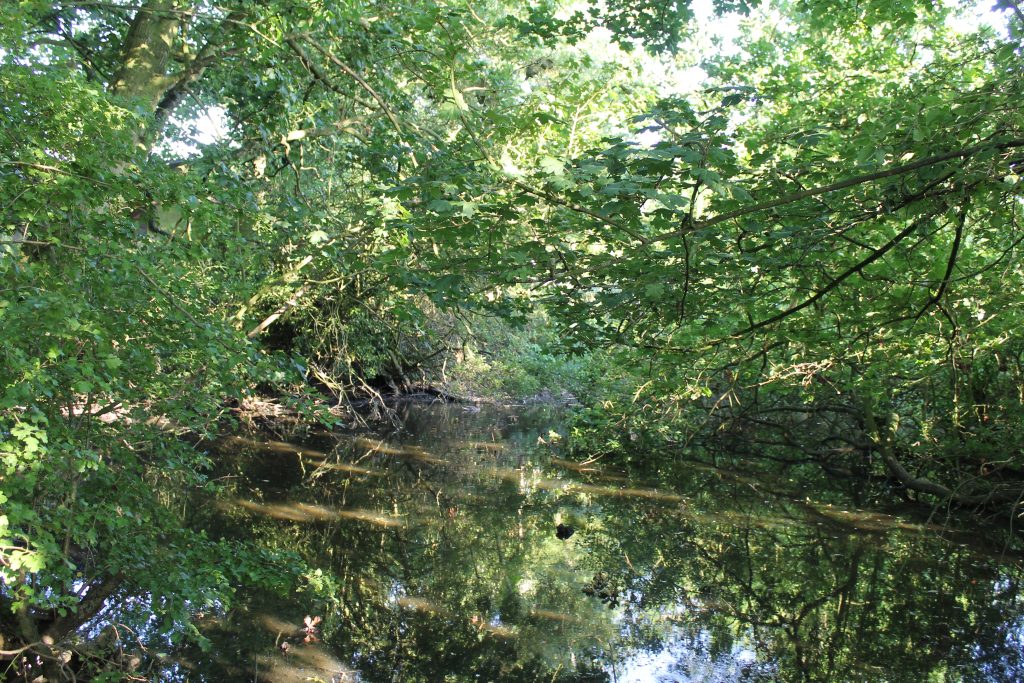
A Bredfield clay-pit pond with overhanging vegetation
Several of these clay-pit ponds survive in and around Bredfield village. Sometimes they have been incorporated into gardens, often adding landscaping or ornamental value. Unless they have been purged of vegetation, these garden ponds will still retain a welcome level of biodiversity.
Ponds under threat
Suffolk’s ponds are under threat. Many ponds will have now disappeared due to human intervention. Ponds no longer have a place in modern, highly intensive agriculture, and many will have been levelled for farmland reclamation. Additionally, some ponds will have been filled and disappeared under housing development. For those ponds that remain near arable land, plants and invertebrates can be adversely affected by the drift of pesticides and fertilisers from field margins. Though the growth of vegetation around ponds is in itself a good thing, a combination of rotting fallen leaves and decreased sunlight can cause ponds to stagnate. A wildlife-friendly pond needs some management. On top of this, the dryer and hotter summers accompanying climate change are causing ponds dry-up for longer periods. When this drying-up happens occasionally it isn’t wholly a bad thing, as some larvae and plants may benefit. When it happens with a degree of permanence, it will be an ecological loss.
According to the Suffolk Wildlife Trust: “Suffolk has around 22,000 ponds in its heavily farmed landscape, around 70% of these have been shown to be neglected and undermanaged, a situation that has to change if we are to secure nature’s recovery in Suffolk.”
Rescuing our ponds
There are two main strategies that can help secure wildlife-friendly ponds. The first of these is to introduce incentives and/or secure funding for pond creation and maintenance on agricultural land (and also, perhaps, on non-agricultural land within parish boundaries). The second strategy is for individuals, families and communities to go it alone and build and maintain their own ponds. Most often, and where possible, this will be the building of ponds in private gardens. The first of these strategies is largely the responsibility of national and local government, and usually requires the assistance of environmental agencies and wildlife trusts. Though we can and should press for more effective environmental policies and outcomes, this might seem a strategy that is out of the hands of most people. By contrast, what happens in our gardens is directly in our hands and we should feel more potent about the possibility of helping wildlife there.
Let’s have a quick look at one example of the first, larger strategy and then turn to matter of garden ponds.
Suffolk Wildlife Trust (SWT) has a Suffolk Ponds Group and also has a Farmland Advice Team. As well as providing practical advice for pond-building and maintenance, SWT also provides guidance on applications to environmental land management schemes and local nature recovery payments to help fund pond projects. They can also help direct and manage applications for mitigation funds, where ponds are created to compensate for the environmental impacts of building development.
One local farm – towards Debach – has taken advantage of this advice and funding, and it is well on the way to the creation of large ponds. These ponds bring the promise of biodiversity enhancement in our area. They are being dug on the site of old ponds, long-since filled in, whose location was found on old maps. These are known as ‘ghost ponds’. This is a highly beneficial project with exciting prospects! Very well done to them. Here are some pictures of the progress so far:
Garden ponds
If you’re not a farmer or landowner with pro-environmental intentions, but have a garden, there are still things that you can do: build and maintain a pond in your garden. Not only will this be great for wildlife, it will also make your garden more attractive and interesting. Several Bredfield residents have built ponds in their gardens, and all report the delightful experiences of nature that they have witnessed. Liz has said of her one-year-old pond: “We’ve really enjoyed seeing what’s arrived – lots of different dragonflies, frogs and newts plus snails and all the usual insects, etc. It’s still a mystery to me how they all arrive!”. The appearance of damselfies and dragonflies is one the most conspicuous events. You’ll soon see them coupling-up and egg-laying (ovipositing, as it’s called), then their larvae will appear in your pond, and later the next generation of adults will emerge (and what a sight that is if you catch the moment!). Pond-skaters and water beetles will come to inhabit your pond in no time. Amphibians will love your pond and, hopefully, you might even get a Great Crested Newt: they are rare and protected, but they are in the local area. Birds will come to your ponds to drink and bath, and some will come to the pond edges to feed. Grey Wagtails, which are usually found beside fast-flowing streams, have been seen at Bredfield ponds. One local resident has even reported the visit of a Kingfisher to her pond. You can grow a range of plants in your pond and some will attract insects. Water Forget-me-Not (Myosotis scorpioides) is a particular favourite and is in bloom from May through to August. Here is a gallery of some of the wildlife seen in and around Bredfield’s garden ponds:
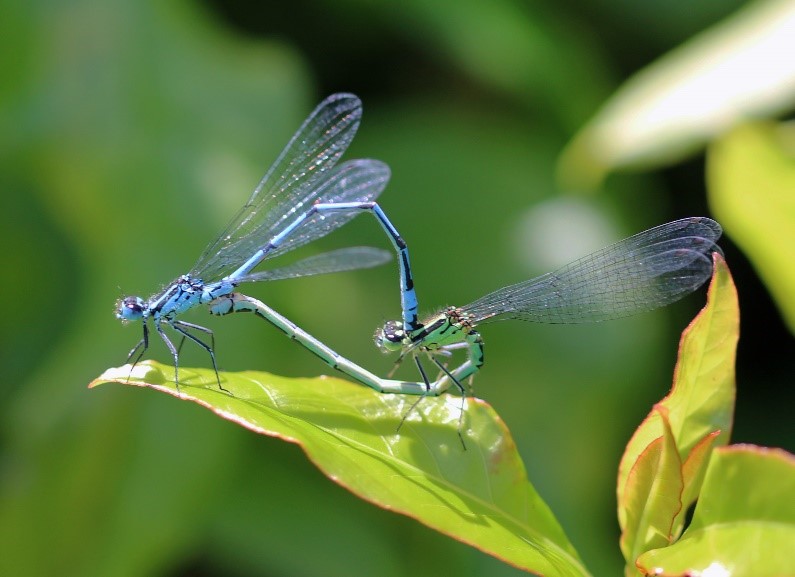
Common Blue Damselfiles 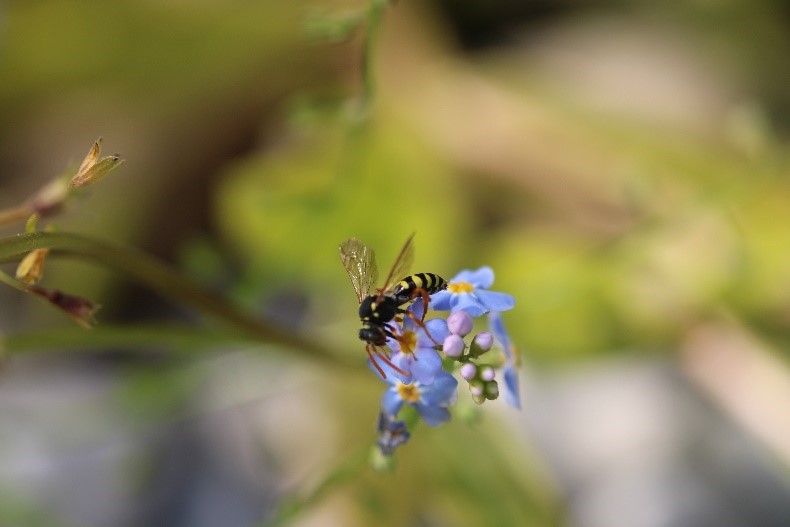
Nomad Bee on Water Forget-me-Not

Friendly Frog 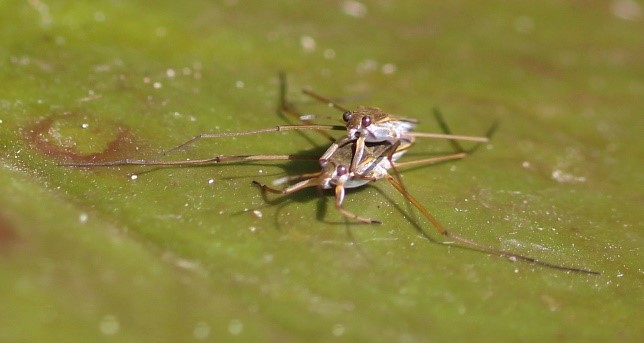
Pond Skaters
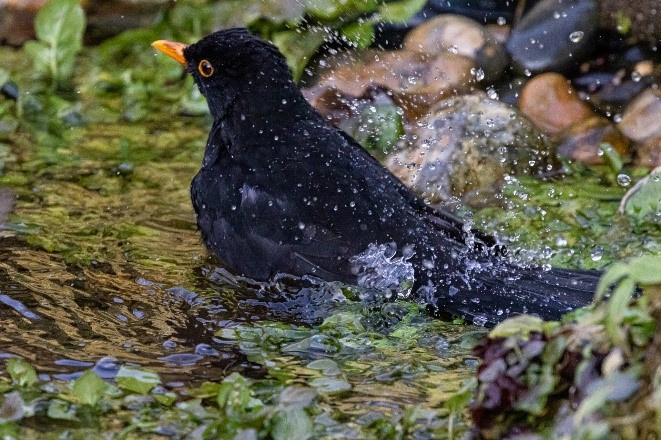
Bathing Blackbird 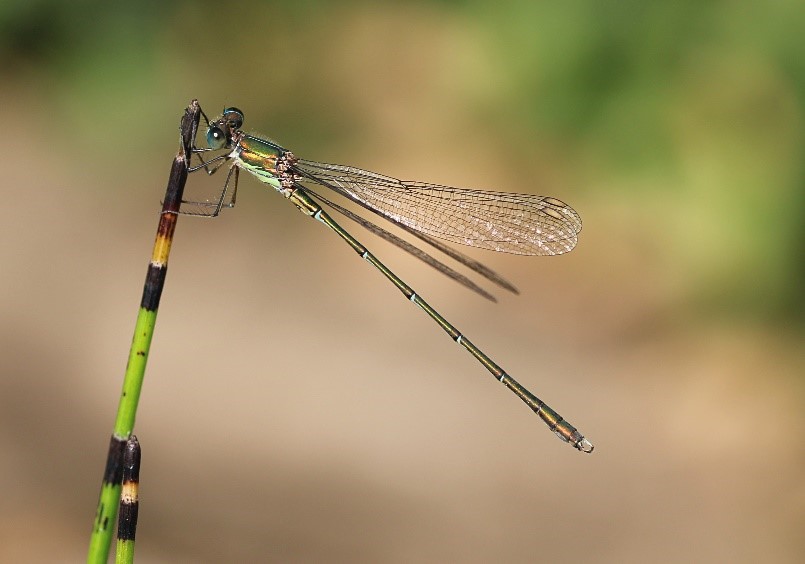
Willow Emerald Damselfly
There are pages and pages that could be written, and have been written, about pond wildlife. The same goes for advice on how best to dig and construct your pond: where to place it; the depth and shape to dig; what plants to place in it; how to keep the water in good condition: and so on. There is not the room to go into all this here, but links to some web-based advice are given below. If you know someone who has already built a pond in their garden, ask them. They will describe all the mistakes they made, so that you can avoid them. Get ponding!
Here are some links to further information and assistance:
- Pond restoration and management | Suffolk Wildlife Trust
- How to build a pond | The Wildlife Trusts
- How to Build a Garden Pond – BBC Gardeners World Magazine
- How to build a pond: a step by step expert guide | (homesandgardens.com)
All photographs were taken in and around Bredfield by: Stewart Belfield, Ann and Stephen Stammers, Liz Whitman, Max Brown and Tom Pirkis
If you have any additional information or photos of Bredfield’s ponds (old or new), we’d love to hear from you. Contact at: [email protected]
